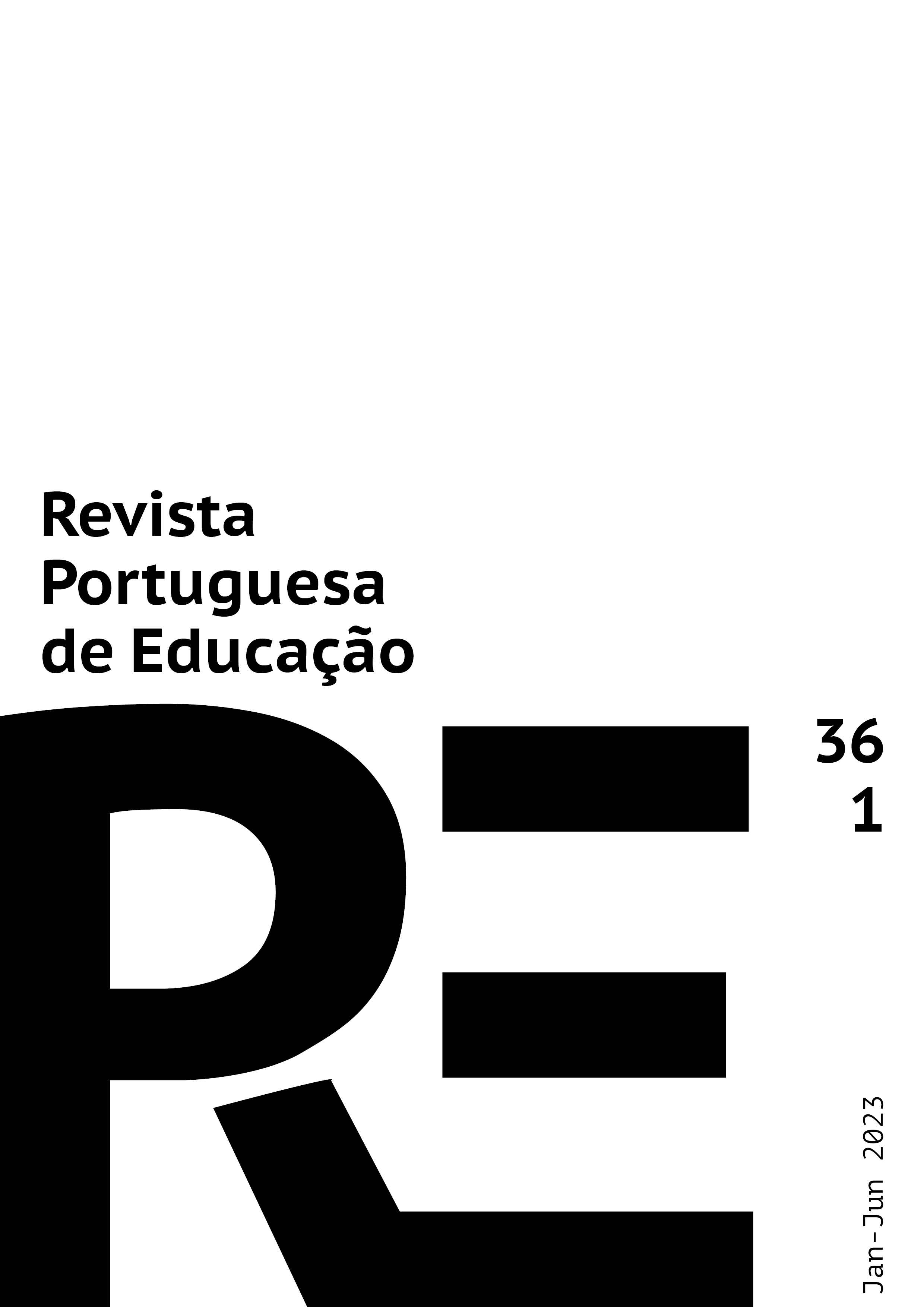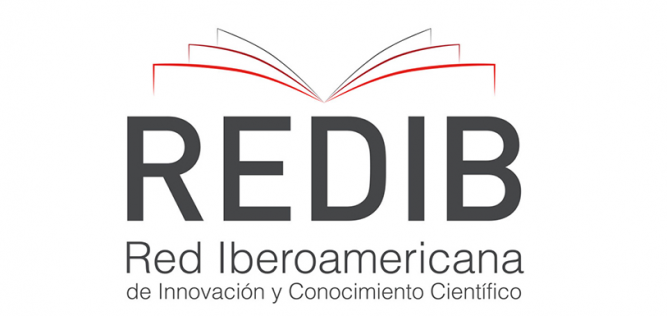Influence of physical activity on behavior and conduct in students with autism spectrum disorder in primary education: a systematic review
DOI:
https://doi.org/10.21814/rpe.26794Keywords:
Special education, Autism, Physical activity, Systematic reviewAbstract
Scientific evidence emphasizes that physical inactivity by children with autism spectrum disorder (ASD) is a global reality that can seriously affect their overall development. Therefore, analyzing the positive effects of the regular practice of physical activity is essential for the subsequent design and implementation of interventions and programs aimed at its promotion. Thus, the objective of this review was to identify, summarize and analyze the influence of physical activity on the behavior and conduct of primary school students (between 5 and 12 years old) diagnosed with ASD. To do this, following the guidelines of the PRISMA declaration, scientific articles in English and Spanish were searched in three databases: PsycInfo, Scopus and Web of Science. Of the 1,226 studies identified, 10 met the previously established inclusion criteria. After its analysis, it was found that all the results point to the positive contribution of physical activity on the behavior, conduct and personal development of these children, mainly in relation to social skills, attention, and self-regulation. In this sense, the programs based on activities of moderate-vigorous intensity of short duration and developed jointly with other subjects are the ones that stand out when it comes to contributing positively to the behavior of students with ASD.
Downloads
References
Alcantud Marín, F., Alonso Esteban, Y., & Mata Iturralde, S. (2016). Prevalencia de los trastornos del espectro autista: Revisión de datos. Siglo Cero, 47(4), 7-26. https://doi.org/10.14201/scero2016474726
American Psychiatric Association. (2014). Manual diagnóstico y estadístico de los trastornos mentales (DSM-V) (5.ª ed.). Editorial Médica Panamericana.
Baio, J., Wiggins, L., Christensen, D. L., Maenner, M. J., Daniels, J., Warren, Z., Kurzius-Spencer, M., Zahorodny, W., Rosenberg, C. R., White, T., Durkin, M. S., Imm, P., Nikolaou, L., Yeargin-Allsopp, M., Lee, L. C., Harrington, R., López, M., Fitzgerald, R. T., Hewitt, A...., Dowling, N. F. (2018). Prevalence of autism spectrum disorder among children aged 8 years – Autism and developmental disabilities monitoring network, 11 Sites, United States, 2014. In U.S. Department of Health and Human Services/Centers for Disease Control and Prevention, Morbidity and mortality weekly report – Surveillance summaries (v. 67, n. 6, pp. 1-23). https://doi.org/10.15585/mmwr.ss6706a1
Bass, M. M., Duchowny, C. A., & Llabre, M. M. (2009). The effect of therapeutic horseback riding on social functioning in children with autism. Journal of Autism and Developmental Disorders, 39, 1261-1267. https://doi.org/10.1007/s10803-009-0734-3
Bell, A., Palace, K., Allen, M., & Nelson, R. (2016). Using martial arts to address social and behavioral functioning in children and adolescents with autism spectrum disorder. Therapeutic Recreation Journal, 50(2), 176-180. http:// doi.org/10.18666/TRJ-2016-V50-I2-7287
Bernstein, E. E., & McNally, R. J. (2017). Acute aerobic exercise helps overcome emotion regulation deficits. Cognition and Emotion, 31(4), 834-843. https://doi.org/10.1080/02699931.2016.1168284
Bremer, E., Crozier, M., & Lloyd, M. (2016). A systematic review of the behavioural outcomes following exercise interventions for children and youth with autism spectrum disorder. Autism, 20(8), 899-915. https://doi.org/10.1177/1362361315616002
Chiva-Bartoll, O., Maravé-Vivas, M., Salvador-García, C., & Valverde-Esteve, T. (2021). Impact of a physical education service-learning programme on ASD children: A mixed-methods approach. Children and Youth Services Review, 126, 1-11. https://doi.org/10.1016/j.childyouth.2021.106008
Chu, C. H., & Pan, C. Y. (2012). The effect of peer- and sibling-assisted aquatic program on interaction behaviours and aquatic skills of children with autism spectrum disorders and their peers/siblings. Research in Autism Spectrum Disorders, 6(3), 1211-1223. http://doi.org/10.1016/j.rasd.2012.02.003
Cortés Moreno, J., Sotomayor Morales, E. M., & Pastor Seller, E. (2017). El alumnado con trastorno del espectro autista en los centros educativos: Un estudio de casos desde la perspectiva familiar. MLS-Educational Research, 1(1), 69-84. https://doi.org/10.29314/mlser.v1i1.28
Crissien-Quiroz, E., Fonseca-Angulo, R., Núñez-Bravo, N., Noguera-Machacón, L. M., & Sanchez-Guette, L. (2017). Características sensoriomotoras en niños con trastorno del espectro autista. Revista Latinoamericana de Hipertensión, 12(5), 119-124. https://www.redalyc.org/articulo.oa?id=170254309003Della Corte, J., Telles, S. C. C.,
Della Corte, A. P. M. S., Souza, P. A., Castro, J. B. P., Lima, V. P., Nunes, R. A. M., & Costa, M. A. F. (2021). Exergames como alternativa pedagógica motivadora nas aulas de educação física: Uma revisão integrativa. Revista Portuguesa de Educação, 34(2), 125-143. https://doi.org/10.21814/rpe.18074
Fessia, G., Manni, D., Contini, L., & Astorino, F. (2018). Estrategias de actividad física planificada en autismo: Revisión sistemática. Revista de Salud Pública, 20(3), 390-395. https://doi.org/10.15446/rsap.V20n3.63040
Gabriels, R. L., Agnew, J. A., Holt, K. D., Shoffner, A., Zhaoxing, P., Ruzzano, S., Clayton G. H., & Mesibov, G. (2012). Pilot study measuring the effects of therapeutic horseback riding on school-age children and adolescents with autism spectrum disorder. Research in Autism Spectrum Disorders, 6(2), 578-588. https://doi.org/10.1016/j.rasd.2011.09.007
García Obrero, E., & González García, H. (2021). Una revisión narrativa: El baloncesto como medio de inclusión en el trastorno del espectro autista. Retos, 42, 673-683. https://doi.org/10.47197/retos.v42i0.87479
García Tabuenca, P. (2016). Trastorno del espectro autista (TEA). Anales: Anuario del Centro de la Universidad Nacional de Educación a Distancia en Calatayud, 22, 149-162. http://www.calatayud.uned.es/web/actividades/revista-anales/22/03-04-PatriciaGarciaTabuenca.pdf
García-Gómez, A., López Risco, M., Rubio, J. C., Guerrero, E., & García-Peña, I. M. (2014). Effects of a program of adapted therapeutic horse-riding in a group of autism spectrum disorder children. Electronic Journal of Research in Educational Psychology, 12(32), 107-128. https://doi.org/10.14204/ejrep.32.13115
Habib, K., Montreuil, T., & Bertone, A. (2018). Social learning through structured exercise for students with autism spectrum disorders. Review Journal of Autism and Developmental Disorders, 5, 285-293. https://doi.org/10.1007/s40489-018-0139-3
Hervás Zúñiga, A., Balmaña, N., & Salgado, M. (2017). Los trastornos del espectro autista (TEA). Pediatría Integral, 21(2), 92-108. https://www.pediatriaintegral.es/publicacion-2017-03/los-trastornos-del-espectro-autista-tea/
Howells, K., Sivaratnam, C., Lindor, E., Hyde, C., McGillivray, J., Whitehouse, A., & Rinehart, N. (2020). Can participation in a community organized football program improve social, behavioural functioning and communication in children with autism spectrum disorder? A pilot study. Journal of Autism and Developmental Disorders, 50(10), 3714-3727. https://doi.org/10.1007/s10803-020-04423-5
Howells, K., Sivaratnam, C., May, T., Lindor, E., McGillivray, J., & Rinehart, N. (2019). Efficacy of group-based organised physical activity participation for social outcomes in children with autism spectrum disorder: A systematic review and meta-analysis. Journal of Autism and Developmental Disorders, 49, 3290-3308. https://doi.org/10.1007/s10803-019-04050-9
Hutzler, Y., & Margalit, M. (2009). Skill acquisition in students with and without pervasive developmental disorder. Research in Autism Spectrum Disorders, 3(3), 658-694. https://doi.org/10.1016/j.rasd.2009.01.011
Kern, L., Koegel, R. L., & Dunlap, G. (1984). The influence of vigorous versus mild exercise and autistic stereotyped behaviors. Journal of Autism and Developmental Disorders, 14(1), 57-67. https://doi.org/10.1007/bf02408555
Kruger, G., Silveira, J. R., & Marques, A. C. (2019). Motor skills of children with autism spectrum disorder. Revista Brasileira de Cineantropometria e Desempenho Humano, 21, 1-8. https://doi.org/10.1590/1980-0037.2019v21e60515
Kwon, S., Sung, I. Y., Ko, E. J., & Kim, H. S. (2019). Effects of therapeutic horseback riding on cognition and language in children with autism spectrum disorder or intellectual disability: A preliminary study. Annals of Rehabilitation Medicine, 43(3), 279-288. https://doi.org/10.5535/arm.2019.43.3.279
Lanning, B. A., Baier, M. E. M., Ivey-Hatz, J., Krenek, N., & Tubbs, J. D. (2014). Effects of equine assisted activities on autism spectrum disorder. Journal of Autism and Developmental Disorders, 44(8), 1897-1907. https://doi.org/10.1007/s10803-014-2062-5
Levinson, L. J., & Reid, G. (1993). The effects of exercise intensity on the stereotypic behaviors of individuals with autism. Adapted Physical Activity Quarterly, 10(3), 255-268. https://doi.org/10.1123/apaq.10.3.255
Ley Orgánica 3/2020, de 29 de diciembre (LOMLOE), por la que se modifica la Ley Orgánica 2/2006, del 3 de mayo, de educación. Boletín Oficial del Estado, núm. 340.
Liu, T., Fedak, A. T., & Hamilton, M. (2016). Effect of physical activity on the stereotypic behaviors of children with autism spectrum disorder. International Journal of School Health, 3(1), 17-22. http://dx.doi.org/10.17795/intjsh-28674
López Díaz, J. M., Moreno Rodríguez, R., & López Bastías, J. L. (2021). Análisis del impacto de un programa deportivo en niños con trastorno del espectro del autismo. Retos, 39, 98-105. https://doi.org/10.47197/retos.v0i39.74841
Mariño Sánchez, M., Rico Díaz, J., Rodríguez-Fernández, J. E., & Peixoto Pino, L. (2021). Instrumentos para evaluar las habilidades motoras em niños con trastorno del espectro autista entre 5 y 12 años: Revisión sistemática. Retos, 42, 286-295. https://doi.org/10.47197/retos.v42i0.87487
Memari, A. H., Mirfazeli, F. S., Kordi, R., Shayestehfar, M., Moshayedi, P., & Mansournia, M. A. (2017). Cognitive and social functioning are connected to physical activity behavior in children with autism spectrum disorder. Research in Autism Spectrum Disorders, 33, 21-28. https://psycnet.apa.org/doi/10.1016/j.rasd.2016.10.001
Nalbant, S. (2018). Effects of participation in inclusive physical activity on social skills of individuals with autism spectrum disorder. Journal of Education and Training Studies, 6(12), 255-261. https://doi.org/10.11114/jets.v6i12.3789
Najafabadi, M. G., Sheikh, M., Hemayattalab, R., Memari, A. H., Aderyani, M. R., & Hafizi, S. (2018). The effect of SPARK on social and motor skills of children with autism. Pediatrics and Neonatalogy, 59(5), 481-487. https://doi.org/10.1016/j.pedneo.2017.12.005
O’Haire, M. E. (2013). Animal-assisted intervention for autism spectrum disorder: A systematic literature review. Journal of Autism Developmental Disorders, 43(7), 1606-1622. https://doi.org/10.1007/s10803-012-1707-5
Oliveira, G., Cavenago, H. F., Goldberg, T. B. L., Venancio, E. J., Teixeira, A. S., & Silva, C. C. (2022). School intervention with recreational motor activity for overweight children. Apunts Educación Física y Deportes, 147, 17-25. https://doi.org/10.5672/apunts.2014-0983.es.(2022/1).147.02
Organización Mundial de la Salud. (2020). Directrices de la OMS sobre actividad física y hábitos sedentarios: De un vistazo. https://www.who.int/es/publications/i/item/9789240014886
Ozer, D., Baran, F., Aktop, A., Nalbant, S., Aglamis, E., & Hutzler, Y. (2012). Effects of a Special Olympics Unified Sports program on psycho-social attributes of youth with and without intellectual disability. Research in Developmental Disabilities, 33(1), 229-239. https://doi.org/10.1016/j.ridd.2011.09.011
Page, M. J., McKenzie, J. E., Bossuyt, P. M., Boutron, I., Hoffmann, T. C., Mulrow, C. D., Shamseer, L., Tetzlaff, J. M., Akl, E. A., Brennan, S. E., Chou, R., Glanville, J., Grimshaw, J. M., Hróbjartsson, A., Lalu, M. M., Li, T., Loder, E. W., Mayo-Wilson, E., McDonald, S.… Moher, D. (2021). The PRISMA 2020 statement: An updated guideline for reporting systematic reviews. BMJ 2021, 372(71), 1-9. https://doi.org/10.1136/bmj.n71
Pan, C. Y. (2010). Effects of water exercise swimming program on aquatic skills and social behaviors in children with autism spectrum disorders. Autism, 14(1), 9-28. https://doi.org/10.1177/1362361309339496
Rivera, P., Renziehausen, J., & Garcia, J. M. (2020). Effects of an 8-week judo program on behaviors in children with autism spectrum disorder: A mixed-methods approach. Child Psychiatry & Human Development, 51(5), 734-741. https://doi.org/10.1007/s10578-020-00994-7
Rosenthal-Malek, A., & Mitchell, S. (1997). Brief report: The effects of exercise on the self-stimulatory behaviors and positive responding of adolescents with autism. Journal of Autism and Developmental Disorders, 27(2), 193-202. https://doi.org/10.1023/a:1025848009248
Sansi, A., Nalbant, S., & Ozer, D. (2021). Effects of an inclusive physical activity program on the motor skills, social skills and attitudes of students with and without autism spectrum disorder. Journal of Autism and Developmental Disorders, 51, 2254-2270. https://doi.org/10.1007/s10803-020-04693-z
Schleien, S. J., Heyne, L. A., & Berken, S. B. (1988). Integrating physical education to teach appropriate play skills to learners with autism: A pilot study. Adapted Physical Activity Quarterly, 5(3), 182-192. https://doi.org/10.1123/apaq.5.3.182
Schleien, S. J., Rynders, J. E., Mustonen, T., & Fox, A. (1990). Effects of social play activities on the play behavior of children with autism. Journal of Leisure Research, 22(4), 317-328. https://doi.org/10.1080/00222216.1990.11969837
Suárez-Manzano, S., López-Serrano, S., Oliveira, P. B., & Murta, L. M. C. (2019). El ejercicio físico en el aula para la mejora del comportamiento de niños autistas. Revista Iberoamericana de Ciencias de la Actividad Física y el Deporte, 8(1), 136-148. https://doi.org/10.24310/riccafd.2019.v8i1.5792
Telles, S., Singh, N., Bhardwaj, A. K., Kumar, A., & Balkrishna, A. (2013). Effect of yoga or physical exercise on physical, cognitive and emotional measures in children: A randomized controlled trial. Child and Adolescent Psychiatry and Mental Health, 7(37), 1-16. https://doi.org/10.1186/1753-2000-7-37
Tse, A. C. Y. (2020). Brief report: Impact of a physical exercise intervention on emotion regulation and behavioral functioning in children with autism spectrum disorder. Journal of Autism and Developmental Disorders, 50(11), 4191-4198. https://doi.org/10.1007/s10803-020-04418-2
Ward, S. C., Whalon, K., Rusnak, K., Wendell, K., & Paschall, N. (2013). The association between therapeutic horseback riding and social communication and sensory reactions of children with autism. Journal of Autism and Developmental Disorders, 43, 2190-2198. https://doi.org/10.1007/s10803-013-1773-3
Yarımkaya, E., & Esentürk, O. K. (2020). Promoting physical activity for children with autism spectrum disorders during coronavirus outbreak: Benefits, strategies, and examples. International Journal of Developmental Disabilities, 68(4), 430-435. https://doi.org/10.1080/20473869.2020.1756115
Zhao, M., Chen, S., You, Y., Wang, Y., & Zhang, Y. (2021). Effects of a therapeutic horseback riding program on social interaction and communication in children with autism. International Journal of Environmental Research and Public Health, 18(5), 2656. https://doi.org/10.3390/ijerph18052656
Downloads
Published
How to Cite
Issue
Section
License
Copyright (c) 2023 Marta Fernández-Díaz, Jose Eugenio Rodríguez-Fernández, Sergio López-García, Javier Rico-Díaz

This work is licensed under a Creative Commons Attribution-ShareAlike 4.0 International License.
1. The authors preserve their authorship and grant the Portuguese Journal of Education the right to the first publication. The work is licensed under Creative Commons Attribution License that allows sharing the work with the acknowledgment of initial authorship and publication in this Journal.
2. The authors have the right to take additional contracts separately, for non-exclusive distribution of the published version of their work (e.g. to deposit in an institutional repository or as a book chapter), acknowledging the initial authorship and publication in this Journal.
3. The authors have the permission and are stimulated to post their work online (e.g. in an institutional repository or on their personal website). They can do this at any phase of the editorial process, as it may generate productive changes, as well as increase impact and article citation (see The Open Citation Project).
The work is licensed under Attribution-ShareAlike 4.0 International (CC BY-SA 4.0)




















